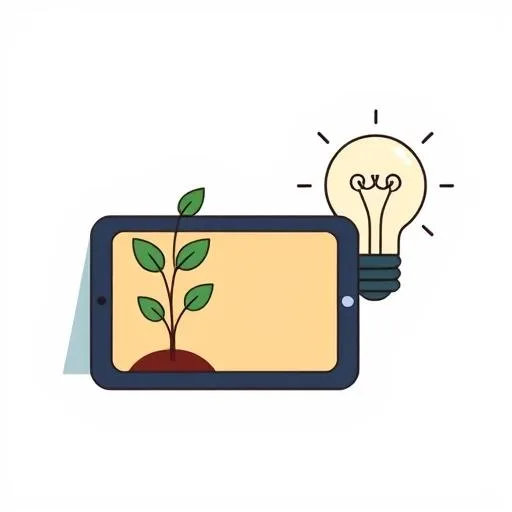When Giants Falter: A Dad’s Take on Building Our Kids for a Future That’s More Than Just Code
You see it in the headlines—a giant of the tech world, Intel, getting a massive lifeline just to stay in the race. It’s a wild story of high-stakes bets and shifting fortunes. But honestly, as I read about it, my mind wasn’t on semiconductor chips. It was on building blocks. The ones currently scattered across my living room floor. It got me thinking: what are we *really* building in our kids? Are we giving them temporary lifelines, or are we helping them build a foundation so strong they can navigate anything?
The Lifeline That Isn’t the Whole Story
So, here’s the scoop in a nutshell: Intel, a name we’ve known for decades, has been going through a tough time. They’ve faced fierce competition and, frankly, missed a few big turns on the tech highway. Now, they’ve received a huge financial boost to help them get back on track. It sounds like a solution, right? A multi-billion-dollar bandage. But as the reports show, this cash infusion doesn’t magically fix the core challenges. According to an analysis from LiveMint, the company is still wrestling with fundamental issues in its business and innovation pipeline. The money buys them time, but it doesn’t buy them a new direction.
Doesn’t that sound incredibly familiar? It’s like when we’re tempted to solve our child’s frustration by handing them a shiny new tablet. It works! For a moment. The crying stops. But it doesn’t teach them patience, problem-solving, or how to handle their big feelings. The lifeline is a temporary fix, not a foundational skill. It’s a powerful reminder that the most important tools we can give our kids aren’t things we can buy. They’re the internal strengths we help them build, piece by piece, every single day.
Nurturing the Mindset, Not Just the Machine

One of Intel’s biggest hurdles was missing the boat on the recent explosion in specialized chips that power today’s incredible technologies. They were the undisputed king of one mountain, but didn’t see the next, even bigger mountain rising right next to them. What an incredible lesson for us parents! It’s so easy to get caught up in making sure our kids are using the “right” apps or learning the “right” coding language. But technology changes in the blink of an eye. The hot new thing today will be a museum piece by the time they’re starting their careers.
Instead of chasing trends, what if we focused on what *never* becomes obsolete? Curiosity. Adaptability. The sheer JOY of learning! I see it with my daughter. She’s seven, and her imagination is a superpower. Sometimes we’ll use a fun app to identify plants on our walks, but the real magic happens when she puts the screen away and starts building a fantastical fairy house from twigs and leaves she found. The technology was the spark, but her creativity was the roaring fire. That’s the goal! We’re not raising kids to be expert users of today’s tools; we’re raising them to be the creative, resilient thinkers who will invent tomorrow’s.
Building a ‘Foundry’ of the Heart
This idea of human connection brings me to another part of Intel’s story that struck a chord. Digging deeper, it turns out one of their struggling divisions, the ‘foundry’ that makes chips for other companies, had a reputation for not being customer-focused. They were brilliant engineers, but they reportedly struggled with the human side of the business—listening, collaborating, and serving others’ needs. This hit me like a ton of bricks. In a world obsessed with STEM, we can’t forget the skills that actually make everything work: empathy, kindness, and communication.
It makes me think of the beautiful, clear sky we had today. On our walk home from school, a few kids were trying to build a complex sandcastle at the playground. It kept collapsing, and frustration was mounting. Then one little girl suggested a new way to work together, and another started encouraging everyone. Suddenly, they were a team. They were listening, helping, and laughing. They weren’t just building with sand; they were building connections. That, right there, is the ‘foundry’ we need to focus on at home. We’re forging character, building a foundation of compassion and collaboration that will serve our kids far more than any technical skill alone ever could.
The Ultimate Investment Is Us
The news is buzzing with billions of dollars being poured into Intel. But the most precious resource in our homes isn’t measured in dollars. It’s measured in minutes. In bedtime stories, shared meals, and unrushed conversations. It’s the investment of our time and our undivided attention.
This is where the real future-proofing happens. It’s in those moments that we build trust, model resilience, and show our kids that they are seen and loved unconditionally. That security is the launchpad for everything else—for taking creative risks, for bouncing back from failure, and for daring to dream big.
Here’s a little something to try, a fun family burst of connection. The next time you’re all together, maybe driving or at dinner, just ask: “If our family was a team of superheroes, what would each person’s special power be?” It’s a simple, playful way to celebrate each other’s unique strengths and reinforce that you’re all in this amazing adventure together.
Watching a corporate giant like Intel navigate its comeback is pretty wild to watch, but the most important comeback story is the one our kids live every day—learning to get up after a fall, to try again after a mistake, and to grow a little stronger, a little kinder, a little more *themselves*. And we, their parents, are their biggest, most passionate investors. And that’s a role that’s worth more than all the chips in the world.
Source: Intel gets a lifeline. Now comes the hard part., Live Mint, 2025/09/07 01:30:08
